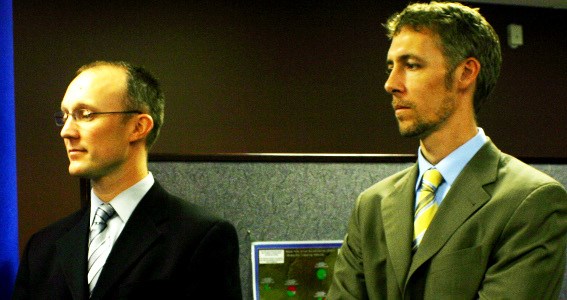Controlling dangerous infectious outbreaks in hospitals means going beyond regular handwashing, cleaning and using antibiotics, especially if someone breaks a quarantine or fails to follow infection control procedures.
While working as a consultant for the Ministry of Health and Long-Term Care in 2003, Niall Wallace got a first-hand glimpse of the SARS outbreak in Toronto. The deadly pneumonia-like disease almost brought Ontario's health-care system to its knees.
"We had a view of what was going on in the war room at the time," says Wallace, president of Infonaut, a Toronto medical software company. "They had a difficult time keeping track of outbreak numbers, who was reporting what, where quarantines were and maintaining contact with people in quarantine that weren't breaking it."
Together with partner Matt MacPherson, they formed Infonaut in 2004.
"We thought GIS (Geographic Information Systems) had a role to play."
The company has teamed up with the Sault Ste. Marie Innovation Centre to develop a new 3D geospatial information system allowing heath-care workers to track the movement of people and assets inside a medical facility.
Looking for a wayward patient who's outside on a smoke break? Maybe there's an employee is hiding a piece of equipment for their own convenience?
The GIS system technicians in Sault Ste. Marie and Toronto through the design software will display the location of a person or asset in real time with a dash-board type information package.
Most importantly, it tracks down people or equipment that come in contact with infected areas during an outbreak inside a hospital.
Those concerns became apparent following an outbreak of C. difficile at Sault Area Hospital in 2006, which prompted public health officials to approach the Innovation Centre for a solution.
The not-for-profit centre's GIS department has won national and international awards for its municipal mapping applications. Now they were being asked to scale down its work to a micro level.
Instead of using this visualization technology to map out communities, what if they could go the other way to look inside buildings by examining floor plans and producing a 3D rendering of a facility?
Wallace and Innovation Centre executive director Tom Vair knew all about one other's work from bumping into each other at GIS trade shows. Both Infonaut and the Innovation Centre were going down the same path in working on map-based tools for the health care sector.
Through the use of tags -- such as a wrist band -- that send out a steady signalling beacon, patients, staff and assets that roam out of a quarantined area can be quickly controlled through a real-time location system.
Their designers and technicians are experimenting with RFID (real time location system) and sonar-based tags that send out signals picked by a network of receivers placed throughout a hospital. The information is captured and fed into a centralized GIS data base.
Wallace's company has developed an intelligent platform and takes this data into an operational report that tells an infection control specialist actually who, what and where is at risk for C. difficile.
The Sault hospital is the venue for the pilot program next spring. The Northern Ontario Heritage Fund is providing $142,900 for research and development.
"This is a flagship (technology) in developing a new product and getting it on the go," says Vair. The details of how ownership of the product will be shared has yet to be finalized.
Wallace believes the system has applications outside of health care in areas of general building management, and even aboard cruise ships. There's a real imperative for a solution to hospital-acquired infections, says Wallace.
Ontario's Auditor General released a special report this fall indicating there are gaps in infection control that showed up during an audit of three hospitals.
The downside of letting an infectious outbreak get out of control can translate to huge damages. Wallace says as many Canadians die from antibiotic-resistant hospital infections as car accidents, AIDS and breast cancer combined, somewhere between 8,000 and 12,000 a year.
"Nobody really knows the full effect hospital-acquired infections are having."
About a quarter million get sick from hospital infections with the costs to the health care system reaching as high as $1 billion annually. After an outbreak of C. difficile killed 91 patients in Burlington, Joseph Brant Hospital spent $1 million cleaning their facility from top to bottom. That facility is the target of a $50 million class action lawsuit.
The technology also has some applications as a training tool. Infonaut and the Innovation Centre are collaborating with Toronto's George Brown College to install their infection control solution in their simulated nursing environment to train nurses on various scenarios.
www.infonaut.ca
www.ssmic.com




